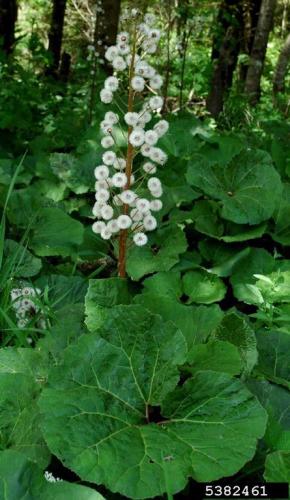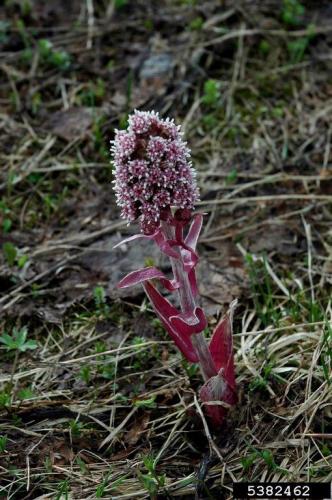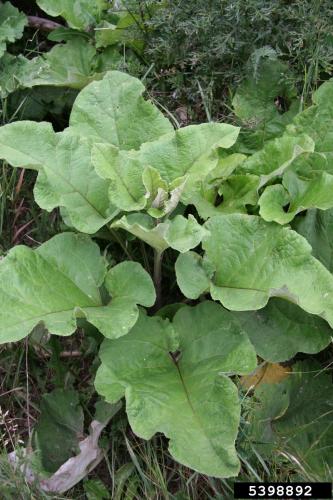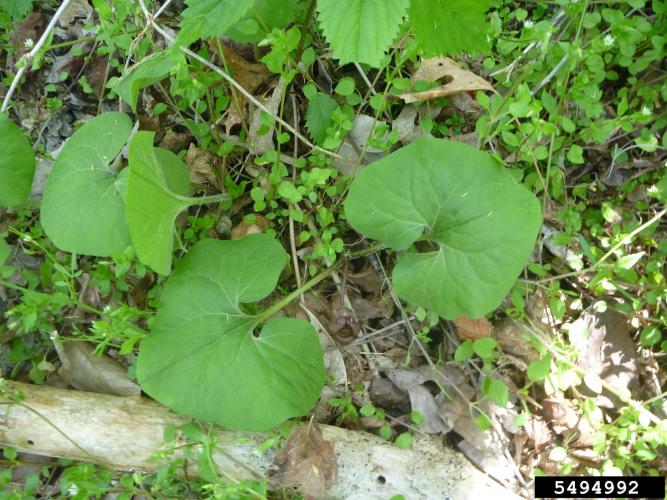Butterbur Sweet-coltsfoot
Identification
Appearance
Herbaceous perennial resembling rhubarb favors moist to wet areas. Roots have a tuberous base with extensive, fleshy creeping rhizomes. Rhizomes are blackish on the outside with white interiors.
Foilage
Large, heart shaped leaves and thick fleshy stalks, span up to 3 feet across. Plants resemble rhubarb. Leaves do not fully emerge until after flowering has occurred.
Flowers
Pinkish flower stalks, composed of bundles of tiny pink radial flowers, emerge from underground in early spring. Blooming occurs before the leaves fully emerge and expand. Male and female flowers typically appear on different spikes.
Fruit
Seeds are attached to feathery pappus (plumes of fine white bristles). In some conditions, seeds are sterile.
Biology
Ecological Threat
Invades wetlands, forests, forest edges, bogs, marshes, and other semi-shaded moist areas. It grows quickly and shades out native species.
Origin
Native to Europe.
Habitat
Meadows, fields, disturbed areas, riverbanks, lakeshore
Life Cycle
Blooming occurs in spring before full leaf out. Male and female flowers typically appear on different spikes.
Vermont Distribution
Citations
Photo Credit
5382461, William M. Ciesla, Forest Health Management International, Bugwood.org
5382462, William M. Ciesla, Forest Health Management International, Bugwood.org
Information Credit
Wisconsin Department of Natural Resources, Butterbur sweet-coltsfoot
GoBotany, Butterbur sweet-coltsfoot



